
The Port of Aqaba lies around 98 miles from the Tiran Straits at the junction of the Gulf of Aqaba with the Red Sea, and is on the eastern side of the head of the Gulf, opposite from the Port of Eilat (Israel) and the Egyptian shore of the Gulf on its western side. The Gulf of Aqaba is from six to ten miles wide, and the Port of Aqaba is the only seaport of Jordan, and consists of three sites, with the Main Port near the city of Aqaba, the Middle Port five kilometres to the south of the Main Port, and the Southern Industrial Port 18 kilometres to the south of the Main Port on the eastern side of the Gulf of Aqaba. It is owned by the Aqaba Development Corporation (ADC), and is operated by five operators. These are the Aqaba Port Corporation for port management and operation, Aqaba Container Terminal (ACT), the Jordanian Industrial Port Company, the Arab Phosphate Company, and the National Electricity Power Company.
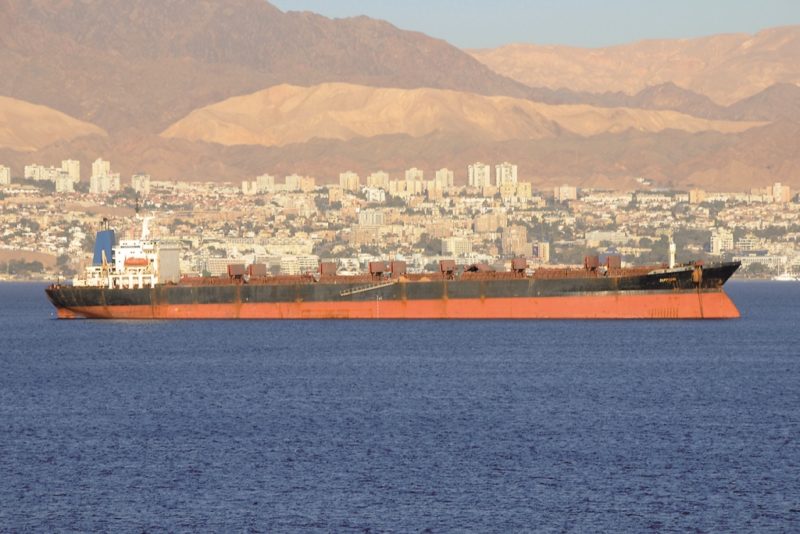
HISTORY OF AQABA AND THE PORT
Aqaba has been a port since Biblical times with the reference to the area in 1 Kings 9:26 as ‘King Solomon also built ships in Ezion-Geber, which is near Eloth in Edom on the shores of the Red Sea’, Eloth being a port on the present day site of Aqaba. The Port of Aqaba was particularly important after the Ottoman Turks built the Hejaz Railway, which connected the port north to Damascus and south to Medina. The economy of Jordan today is linked to the economy of Aqaba with its many industries, and an important ferry link across the Gulf of Aqaba to Egypt carrying over 1.3 million passengers and much freight per annum. The walled city of Ayla at Aqaba was built in the 7th century AD, and provided the Islamic world from that point of time with a route southwards to the Islamic pilgrim city of Mecca.
The most famous nearby attraction is the ‘Lost City of Petra’, which thrived between 400 BC and 106 AD inhabited by the Nabatean people. The city was lost in the desert for hundreds of years but the famous vertical carvings in red, white and pink of high columned entrances to buildings can be easily visited from Aqaba as they are only 100 kilometres away in a north east direction. This is a UNESCO World Heritage Site and well worth the journey to get there through the Jordanian desert. A very narrow gorge provides the striking prelude before viewing the high temples, theatres, buildings and houses of 80 metres in height. The best time to visit Petra is at dawn or dusk.
The Greeks called the port Berenice, and the Romans named it Aelana and Aila, with the great Via Tralana Nova carrying travellers south from Damascus to Aqaba, where the road connected with the western route to Philistia and Egypt. The Port of Aqaba was ruled by the Caliphate of Islam after the prophet Mohamed began his teachings in the 7th century AD, and the city of Ayla was built near the present site of Aqaba. The European Crusaders controlled the Port of Aqaba from their base in Jerusalem during the 12th century, and built the Fortress of Helim to assert their control, which is situated to the north of the Main Port. The great Arab leader Saladin recaptured the port in 1170 AD, and then the Mamluks from Egypt took control in the 14th century and reconstructed the fort built by the Crusaders and it is now known as Aqaba Fort. The Crusaders also fortified Pharaoh’s Island just off the eastern side of the Gulf of Aqaba near Taba and crowned it with an impressive fort, reached today by tours from hotels. The Ottoman Turks began their long four centuries of occupation in the early 16th century, but Aqaba remained as a small fishing village during this long period.
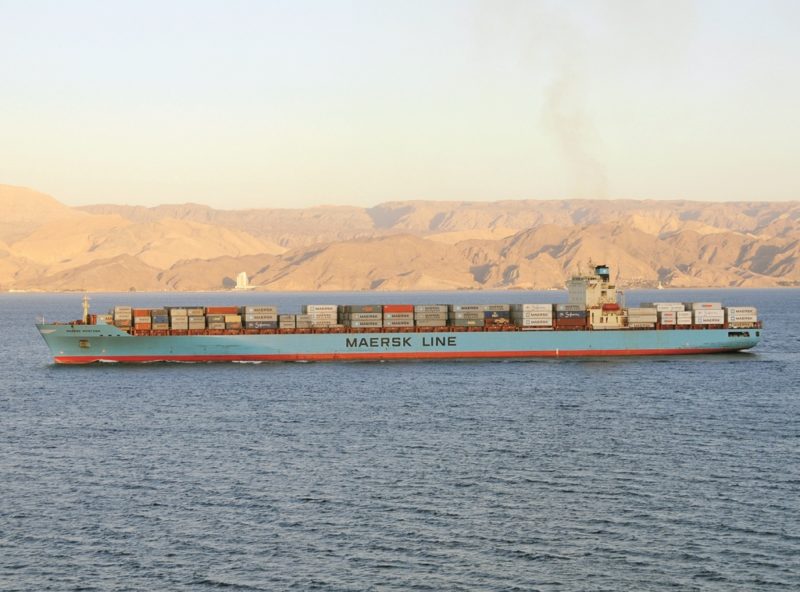
The Thomas Cook holiday excursions to Egypt, Palestine and Syria to visit the Holy Land reached a peak in 1902 when a full page colour advertisement appeared showing Jerusalem and the Golden Dome of the Rock Temple for Christian worshippers, or the same Qubbat al Sakrah Golden Temple for Arabic Moslems to worship. Journeys over the desert were via the Port of Aqaba, and Thomas Cook also built a big fleet of Nile river cruisers.
The Port of Aqaba had only a small quay for barges and trawlers in 1939, but a Royal Decree from the King of Jordan in 1952 established the Aqaba Port Authority, expanding the old quay and adding new quays, and warehouses and open storage yards. Cargo throughput expanded ten times by 1958 to 600,000 tonnes, with a new phosphate exporting quay added a year later and throughput expanded to 800,000 tonnes by 1964. A Royal decree was issued in 1979 to merge the Aqaba Port Authority and the Jordan Maritime Corporation under the name of the Aqaba Company for Ports Management and Operation (ACPOM). A massive industrial expansion with two other port sites added to the original main port followed with phosphate, steel, paper, rice, cement, timber, grain, livestock, and automobile cargoes, as well as oil and gas terminals and a passenger and cruise terminal led to a throughput of 18.0 million tonnes in 1988. This figure fell back in the early 1990s due to the American blockade and the Persian Gulf War, but today a throughput of 20 million tonnes of imports and exports is handled.
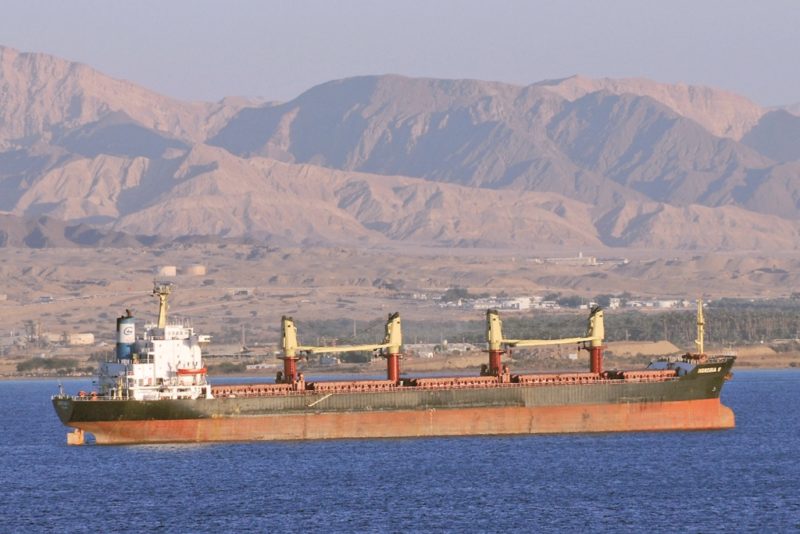
THE BATTLE OF AQABA
Ottoman forces were expelled from Aqaba on 6th July 1917 by a combined force of 5,000 Arab fighters led by Auda Ibu Tayi and Sherif Nasir and T. E. Lawrence (1888-1935) of Britain together with British naval forces assistance. Lawrence had volunteered for active service just after the start of the war and was stationed in Egypt in 1916 and sent to Arabia, quickly becoming involved in the Arab Revolt. The Hejaz Railway had by September 1914 only one gap in this very long railway line from Turkey via Damascus and Aqaba to Medina. This was in the mountains of Turkey, and when that ongoing work had been finished it would have been possible to travel by rail all the way from the Ottoman capital of Constantinople to the Arabian city of Medina some 1,800 miles to the south.
The Hejaz Railway was attacked for nearly two years by British demolition teams working with their Arab rebel allies, and methodically attacked the bridges and isolated depots to cut this vital supply line throughout 1917 and 1918. T. E. Lawrence and other British officers personally blew up 79 bridges using special blockbuster bombs along the railway, with damage so extensive that much of it had to be abandoned. In the Arabian desert, there are still today several mangled train cars stranded and slowly rusting away. Laurence wrote his excellent wartime memoirs, the book ‘Seven Pillars of Wisdom’, which was translated into over a dozen languages and remains in print today. The 1962 iconic film ‘Lawrence of Arabia’ starring Peter O’ Toole as Lawrence and Omar Sharif as Sherif Ali remains one of my most favourite films of all time.
The move to capture the city of Aqaba by Prince Feisal and Howeitat Arab tribes assisted by British reconnaissance and help was not deemed desirable in May 1917 as the McMahon-Hussein agreement had been superseded by yet another Sykes-Picot Treaty agreement with the Turks. Lawrence, however, decided to go his own way without orders, and called it a private venture void of British support since Prince Feisal had provided money, camels, stores and explosives. A 600 mile desert journey by Arab forces was led by Sherif Nasir, while Lawrence was accompanied by Nesib el Bekri and Auda Ibu Tayi, leader of the northern Howeitat tribe of Bedouin. Aqaba is surrounded by mountains to the north and east and is connected to the interior by Wadi Itm. This long and narrow gorge could be used by Ottoman forces to bottle up any British invasion by sea, although it did not stop the Royal Navy from bombarding Aqaba.
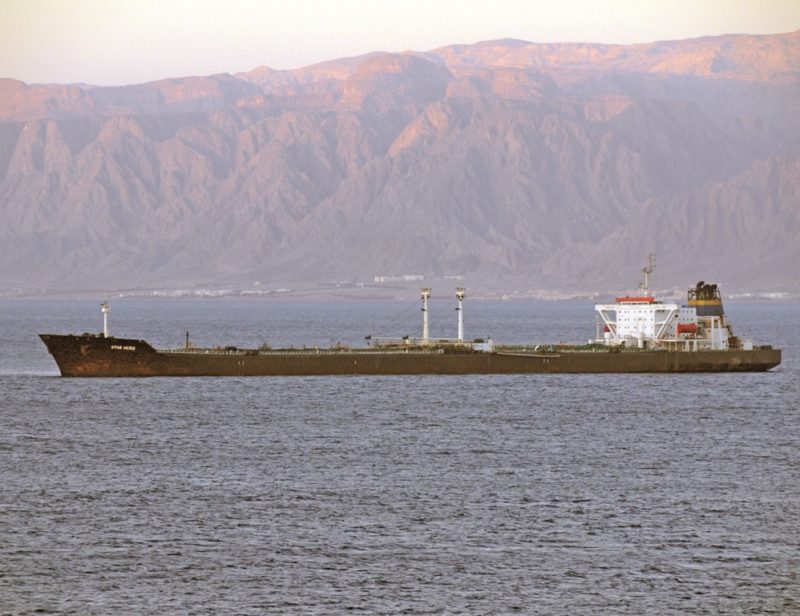
On 6th July 1917, the Ottoman garrison at Aqaba comprised 300 men and it was feared that the garrison could pose a threat to the flank of British forces or would act as a springboard for raids into the Sinai desert or even be used as a base by German U boats in the Red Sea. Lawrence knew that the Arabs needed to take Aqaba to extent their front northwards as a tactical move to link up with British forces. The Arab and Lawrence plan was to capture Aqaba from the east without guns or machine guns, as the Ottoman unguarded eastern side was their least line of resistance and easiest for the Arabs.
Lawrence and other British officers had contrived to deceive the Turkish Army that their objective was an attack on Damascus and Aleppo to the north, drawing attention away from their real target of Aqaba. The Arab expedition started moving towards Aqaba in early May 1917, but lost three men to snake bites in Wadi Sirhan. While there, Lawrence and Auda decided to attack the rail line in the area of Daraa to convince the Turks that the main Arab force was at Azrak in Sirhan. Lawrence found no suitable targets that far north, and ended up attacking the Atwi rail station south of Amman before moving south again to Aqaba.
Three Howeitat tribes aided the effort to secure the Pass El Lissan along the road from Maan to Aqaba. The Fuweilah blockhouse was attacked by the Darausha and Dhiabat tribes, while the Dhumaniyeh tribe and other Arab forces under Auda Ibu Tayi and Lawrence attacked the Ghadir El Haj garrison along the rail line to the south of Maan, destroying ten bridges. However, the Dhumaniyeh were unable to keep control of the pass when a Turkish relief battalion arrived under Niaz Bey. Auda Ibu Tayi personally led a charge of fifty horsemen against Turkish troops on 2nd July while 400 camelmen under Nasir and Lawrence attacked and caused 300 Turkish casualties and 300 captured, with Arab losses of only two men. Lawrence was nearly killed in the action as he accidentally shot his camel in the head with his pistol, and Auda Ibu Tayi was hit by six bullets which destroyed his field glasses, holster and scabbard but left him unharmed.
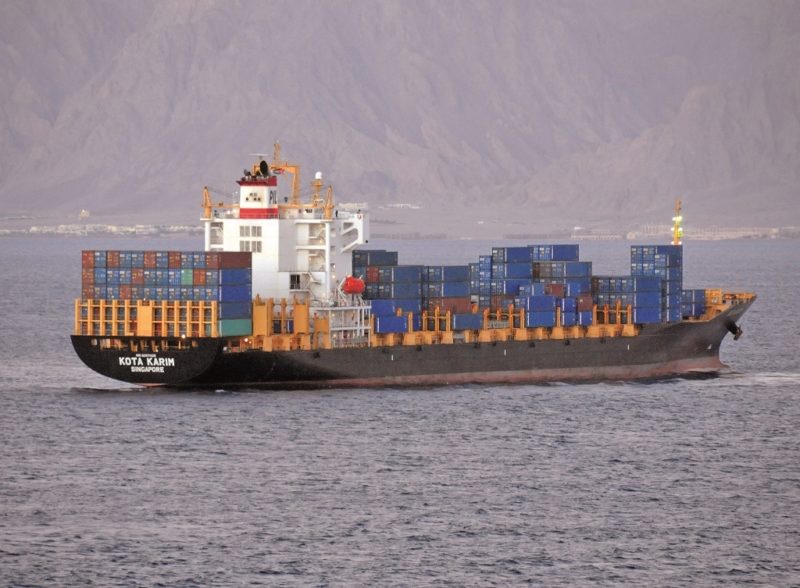
Three more Turkish posts were taken at Guweira, Kethera and Khadra on the way to Aqaba. Guweira was captured by Sheikh Ibu Jad by the time that Lawrence and Auda arrived, and the 120 Turkish soldiers in the garrison had been taken prisoner. Kethira was taken during the night of 4th July aided by a lunar eclipse, and Khadra at the mouth of the Itm and its 300 man garrison surrendered on 6th July, only four miles from Aqaba. The victorious Arab force swept into Aqaba, with 2,000 Howeitat men taking 700 Turkish soldiers including 49 officers prisoner. Auda Ibu Tayi established a strong Arab force of 600 men at Guweira to give enough time for the gain of Aqaba to be consolidated, with Lawrence then travelling with eight others across the Sinai peninsula to Suez in 49 hours. The warship Dufferin was despatched to Aqaba with food, bringing back the huge number of prisoners, and together with the warships Euralyus and Humber guarded the captured port. A landing strip was built at Kuntilla and by August 1917 the Royal Flying Corps were bombing Maan, Abu El Lissan and Fuweilah. During the next four months, Lawrence and British explosives experts blew up more bridges and 17 locomotives, making the Hejaz Railway no longer a functioning railway.
Damascus was captured in October 1918, and the final peace treaty in 1919 at Damascus, attended by all of the Arab tribe leaders, Lawrence, and senior British officers, created the State of Syria jointly administered by Britain and France, with no land or state allotted to the Arabs, which Lawrence had originally promised to the Arabs to enlist their support. Lawrence returned to England and retired from Middle East affairs, and he died as a result of a motorcycle accident in 1935. He had a great love of the Arabian deserts, spoke Arabic fluently, and wrote many original letters on Palestine as a possible Arab State. He became virtually an Arab leader when the Turks surrendered and discussed surrender terms with him on 5th July 1917 in the desert outside Aqaba.
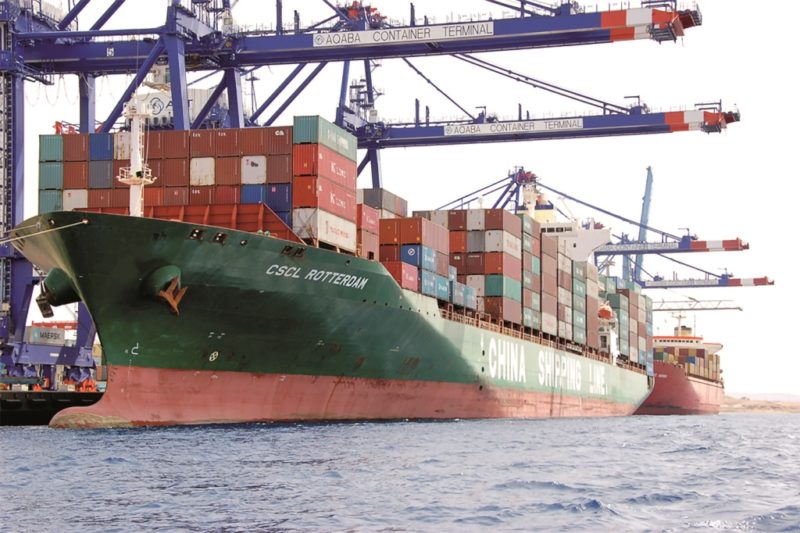
THE MODERN PORT OF AQABA
The city of Aqaba is located at position 29°52′ North, 35°00′ East with the port occupying three sites to the south of the city on the eastern side of the Gulf of Aqaba. These sites are:-
MAIN PORT
Twelve berths of total length of 2,120 metres with ten for the handling of general cargo, grain, and other cargoes, and Berths A and B phosphate exports in bulkers of up to 70,000 dwt with an alongside depth of 14.4 metres. At the northern end of this very long quay, there is a small access pier for workboats, with the nearby Aqaba Customs Directorate on King Hussein Street, which joins the South Beach Highway at its starting point. This Highway runs around the Main Port and heads south to run around the Middle Port and then heads south again to run around the Southern Industrial Port. The quays of the Main Port have 35 metre wide concrete aprons, with Berth 1 dedicated to the import of grain at a discharge rate of 1,000 tonnes per hour by conveyor belt to the grain silos. The other two berths handle phosphate exports with Berth A for phosphates of length 220 metres and Berth B of 180 metres and alongside depths of 14.4 metres. Berth A loads at a rate of 1,000 tonnes per hour of phosphates, while Berth B loads at a faster rate of up to 4,400 tonnes per hour. There is also a berth for ro-ro cargoes, another for mineral and vegetable oils, another for barge traffic, and other berths for tugs, pilot boats, bunker craft, workboats and barges.
MIDDLE PORT
There are seven berths of a total length of one thousand metres for handling container ships, passenger and cruise ships, and general cargo ships carrying rice, as well as livestock carriers, cement carriers, and ships carrying vegetable oils. There are four main berths:-
MO’TA Berth, which is a floating berth connected to the quay of 150 metres in length, 35 metres wide, with alongside depth of 23.0 metres for bulkers up to 53,000 dwt exporting bagged cement from the cement factory, while there are also rice processing plants, and pens for holding livestock.
MOSHTERAK Berth, which is a dolphin berth of 120 metres in length with sufficient alongside depth for bulkers of up to 100,000 dwt, and is equipped with conveyor belts of capacity 250 tonnes per hour for the unloading or loading of bulk cargoes.
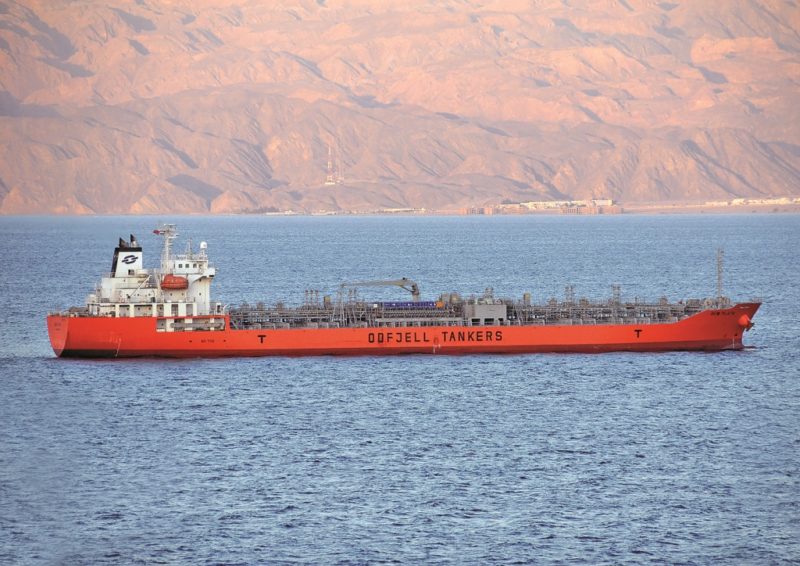
AQABA CONTAINER TERMINAL (ACT) is located just to the south of the Mo’ta Berth with three berths of 540.0 metres in length and 15.0 metres of alongside depth for container ships of up to 14,700 TEU capacity. The terminal is located at 29°30′ North, 34°59′ East and is the only container terminal of Jordan and is also the second busiest container terminal on the Red Sea. ACT is a logistics hub and an important part of the Jordanian economy and tranships containers and moves them to other nearby countries. ACT is a joint venture between the Aqaba Development Corporation and APM Terminals of Maersk Line under a 25 year agreement to build and operate the terminal that was signed in 2006.
The Port of Aqaba handled only around 50,000 TEU of containers between 1983 and 1993, with ACT on stream in 2006, and a big expansion project was completed in October 2013 to add 460.0 metres in length to the existing quay to create a total length of 1,000 metres or 0.62 miles and increased throughput to 1.3 MTEU annually. Two new Panamax Gantry Cranes with an outreach of 22 containers, and four Rubber Tyred Gantry cranes (RTGs) completed the expansion. There are three large container storage areas directly behind each of the container ship berths, with more containers stored up to the limit of the South Beach Highway. APM Terminals Jordan is responsible for operating, managing and marketing the terminal, which has one thousand employees, with APM Terminals investing $300 million to streamline and computerise port operations. Maersk Line, MSC, CMA CGM, Jolly Shipping Group, PIL, SM Line, CSCL, COSCO, Hapag-Lloyd, Yang Ming and other container lines call at ACT. There is also a small Ro-Ro berth just to the north of ACT of ramp length 40.0 metres with alongside depth of 10.0 metres and able to handle both bow and stern loading ro-ros and ferries.
YARMOUK PASSENGER TERMINAL is a floating berth of quay length 150 metres located 0.2 miles south of ACT, and is used for passenger and cruise ships and ro-ro cargo ships and ferries of up to 19,000 dwt with an alongside depth of 23.0 metres. Unloading of general cargo is done to trucks, and thus it is not possible for passengers to walk to the port exit, bus shuttles drop one off at a bus terminal near the city centre where local buses can be boarded, or simply book the shore tour from the cruise line that leaves on buses at the quay. The passenger terminal was completed in 1986 with contributions of money from Jordan, Egypt and Oman. The city of Yarmouk and Yarmouk University are located in Northern Jordan, with the university established in 1976 and currently is at the forefront of Jordanian and Middle Eastern universities and has important post graduate work.
The ferry service operates from this ro-ro berth at the southern end of the Middle Port, between Aqaba and Nuweiba on the Sinai Peninsula of Egypt, with the 68 kilometre voyage covered in two and one half hours. The 384 kilometres long road from Amman to Aqaba then connects at Nuweiba to a 500 kilometre long road to Cairo. The Aqaba Marine Aquarium was built in the shadow of the ferry terminal, and has over fifty species of beautiful and rare fish, in addition to thirty invertebrates, and thirty species of hard and soft corals. The Aquarium is used as a teaching and research centre by Yarmouk University and other universities, as well as an entertaining centre for cruise passengers on their shore tours.
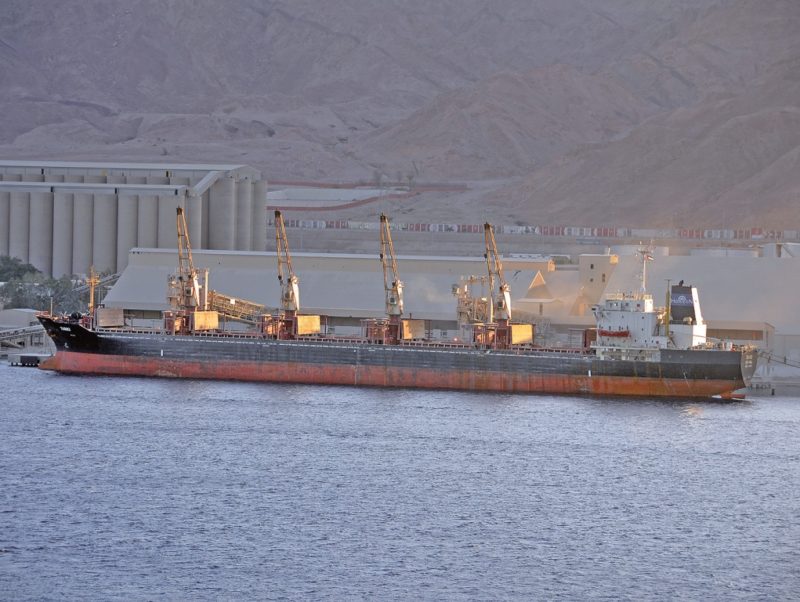
SOUTHERN INDUSTRIAL PORT
The position of the port is 29°26′ North, 34°58′ East, with four oil, LPG and LNG berths of total length 640.0 metres for handling crude oil and oil products at the northern end of the Industrial Port, with the Sheikh Sabah Al Ahmad Terminal for LPG gas cargoes. The crude oil jetty was built in 1986 of length 362 metres with four dolphins for mooring at a long berth for handling ULCCs of up 400,000 dwt with a maximum length of 370 metres and a maximum draft of 24 metres.

There are two phosphate exporting berths of the Jordan Industrial Phosphate Company (JIPC) to the south of the oil berths, followed by the Jordan Industrial Terminal (JIT) to the south of these with bulkers on both the inside and outside of the terminal, with the inside berth next to the Marine Services Harbour for small craft. Moving south, there are automobile loading and discharging berths, bulk and general cargo berths, and ro-ro berths at the head of the Aqaba New Port rectangular basin with also grain and multi-purpose berths. Finally, at the south of this southern port, there is space for the building of a new ferry port for crossing the Gulf of Aqaba to Egypt.
The West Industrial Berth is 220 metres in length with 15.0 metres alongside depth for handling bulkers up to 70,000 dwt, while the East Industrial Berth is 190 metres in length and 11.0 metres alongside depth for handling bulkers up to 40,000 dwt with cargoes of bulk fertiliser, sulphur, salt, potash, ammonia and chemicals from or for the plants of the Aqaba Industrial Zone.
The Timber Berth is of length 80 metres with 7.0 metres of alongside depth for handling ships up to 14,000 dwt with cargoes of logs, timber and livestock.
The Aqaba Port Corporation allows the private sector to invest and share in the management of its three port areas e.g. the Indo-Jordan Chemical Company and the Nippon Jordan Fertiliser Company. Sultan Qaboos of Oman and King Hussein of Jordan toured the Port of Aqaba in 1984 when exports of the Port of Aqaba were increasing at a rate of over 50% per year, with a donation of Omani money to develop the cruise and passenger facilities at Yarmouk Passenger Terminal, which was then built and completed two years later with modern lounges and reception areas. The port charges reasonable tariffs, good loading and discharging berths, excellent infrastructure and equipment e.g. Post Panamax Gantry Cranes and Rubber Tyred Gantry Cranes (RTGs), Reach Stackers, High Stackers, and dry and liquid bulk berths. Port employees are Jordanian nationals as well as some from neighbouring countries, with an excellent road network connecting to five countries.
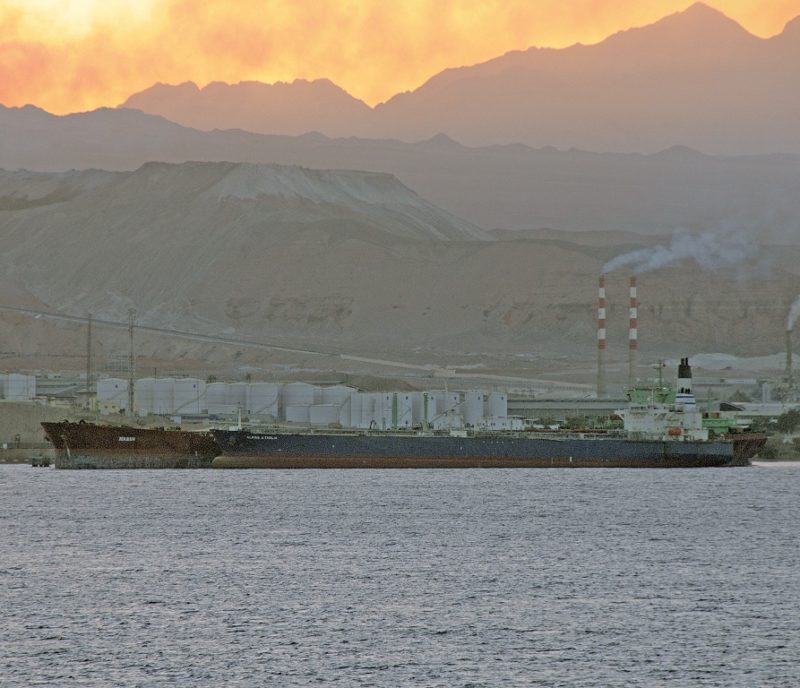
The ISPS Code for the safety and security of all vessels and crews as well as all cargo passing through the port is in operation. The Prince Hamzah Oil Spill Response Centre is equipped with all kinds of suction and boom equipment to tackle environmental damage from oil spills and is located in the Main Port. The IT operations in the port are second to none in the world and give valuable management data, port vessel positions, current and available cargo and space beyond the port to store the cargo in a easy to use online screen system accessible to most employees. There are also reports for shipping lines and agents with container and break bulk quotes available online before choosing to use the port. The Port of Aqaba is the gateway for cargo to the Levant and Middle East area, with fast rail and road access in the port, and for the movement of cargo either north to Israel or south to Saudi Arabia.
The Port of Aqaba experienced a big decline in business in 1990 with only three ships per day calling instead of over twenty ships per day normally. This was due to the United Nations embargo on trade to the area in response to the Persian Gulf crisis, and there was an American naval blockade in the Gulf of Aqaba. The Port of Aqaba also experienced a big drop in the amount of imported oil arriving by pipeline from three other Arab States, with oil having to be carefully used and stored in tank farms and floating storage tankers moored in the port.
PORT OF AQABA STATISTICS
- Total Land and Sea Area 2.061 Million m2
- Total Land Area 1.680 Million m2
- Total Sea Area 0.381 Million m2
- Maximum length of port 4,750 metres
- Maximum width of port 750 metres
- Oil Refinery area 95,000 m2
- Grain Silo area 36,000 m2
- Free Zone area 19,500 m2
- Military Zone area 27,600 m2
- Main Port Area 1.041 Million m2
- Middle Port Area 0.447 Million m2
- S.Industrial Port area 0.573 Million m2
- Oil Terminal Area 17,500 m2
- Industrial Berth areas 11,200 m2
- Main Port Length 2,300 m2
- Main Port Width 750 metres
- S.Industrial Berth length 2,450 metres
- S.Industrial Berth width 550 metres
- Timber Berth Length 700 metres
- Timber Berth width 400 metres
- Oil Terminal Length 340 metres
- Oil Terminal Width 50 metres
- Total Production Capacity 28.0 Million tonnes per year
- Number of Shifts 3 per day of 8 hours
AQABA PORT CARGO HANDLING EQUIPMENT
- 2 Mobile Cranes of 100 tonnes capacity
- 2 Mobile Cranes of 90 to 120 tonnes capacity
- 4 Mobile Cranes of 45 tonnes capacity
- 32 Mobile Cranes of 2 to 15 tonnes capacity
- 76 Forklifts of 2 to 30 tonnes capacity
- 21 Towing Tractors
- 82 Trailers
- 20 other towing vehicles
- Closed Warehouses 62,000 m2
- Covered Warehouses 412,000 m2
- Phosphate Storage 310,000 tonnes
- Grain Storage 150,000 tonnes
- Open Storage Yard 245,000 m2
- Potash Storage Yard 150,000 tonnes
- Rice Silos Capacity 55,000 tonnes
- Cement Storage Capacity 30,000 tonnes
- Reefer Capacity 500 tonnes
AQABA PORT PRODUCTIVITY RATES
- Bagged Cargo 6,000 tonnes per day
- Paper 1,500 tonnes per day
- Steel billets 3,500 tonnes per day
- Phosphate exports 50,000 tonnes per day
- Rice 6,000 tonnes per day
- Cement 5,000 tonnes per day
- General cargo 1,000 tonnes per day
- Timber 2,300 tonnes per day
- Reefer cargo 300 tonnes per day
- Livestock 15,000 head per day
- Grain 12,000 tonnes per day
- Vehicles 3,000 per day
- Oil 18,000 tonnes per day
AQABA PORT CARGO CLASSIFICATION
- Grain and Animal Feed
- Dry Bulk
- Crude Oil and Oil Products
- Vegetable Oils
- LPG and LNG Liquid Gases
- Ammunition, Fireworks, Flammables & Explosives
- Livestock
- Ro-ro Trailers & Vehicles
- Vehicles Loaded or Discharged by Crane
- Vehicles Loaded or Discharged with Cargo
- Empty Trailers
- Pre-Slung Machinery
- Logs and Timber
- Bagged Cargo
- Steel, Zinc, Scrap Metals
- Pipes
- Drums
- Meat, Vegetables & Fruit
- Palletised or Unitised Cargo

JORDAN NATIONAL SHIPPING LINE (JNSL)
JNSL was established as a national shipping line for Jordan in 1976 with 80% of its shares owned by the Government of Jordan, and has had 44 years of experience in the business of shipping. JNSL today is a member of a group of companies with a wide range of affiliates and subsidiaries e.g. the Aqaba Port Marine Services Company (APMSCO), Jordan National Lines for Ship Operation (JNLSO), Jordan International Chartering Company (JICC), Arab Ship Management (ASM), Jordan Group of Shipping Agencies (JGSA) and the Jordan Academy for Maritime Studies (JAMS). The company was privatised in 2002 but remained as the flag carrier for Jordan with the Jordanian flag of black over white over green bands and a red triangle with a white star to the hoist flying from their sterns.
The company shares are traded on the Amman Stock Exchange (ASE), and JNSL is based in a modern office in Wadi Saqra Street in Aqaba, with the following business areas:-
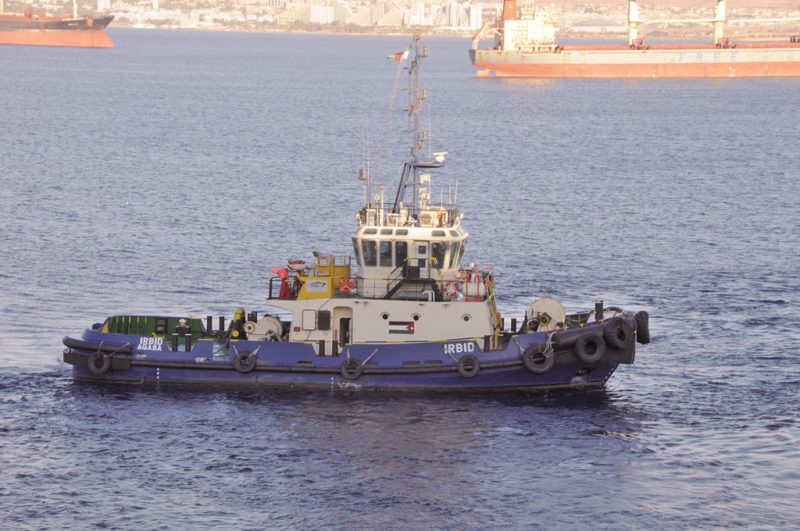
SHIPOWNING
JNSL has used best shipping practice of owning ships when the shipping market is strong, and chartering vessels when the shipping rates fall or only a limited amount of cargo is seen to be available over a short time frame. JNSL began regular liner services from the U.K. and Continent to Aqaba in 1976 from the ports of Antwerp, Zeebrugge, Rotterdam, Bremen, Hamburg and Sheerness. Chartered ships were used at first then JNSL purchased two general cargo ships for the regular trade from the U.K. and Continent. This pair of ships were sold at the end of 1986, and the European liner trade became one way only to Aqaba with chartered ships as the ballast voyages back to Europe had made the trade uneconomic.
JNSL purchased two bulk carriers in 1982, which were managed, operated and time chartered by Jebsen of Norway. The fleet in 1986 comprised two sister bulkers of around 22,000 dwt that had been built by the Nippon Kokan Shimizu yard in 1973 and were purchased and renamed Al Karameh and Hitteen of 21,916 dwt.
The engines aft general cargo ship Jordan I of 9,815 grt and 16,271 dwt with a loaded draft of 9.26 metres was the third member of the fleet in 1986 and could carry 250 TEU of containers at a service speed of 15 knots. She had five holds served by five cranes and five derricks of up to 20 tonnes capacity.
The similar general cargo ship Jordan II followed of 8,203 grt and 14,600 dwt and was completed in 1988. The fleet has included general cargo ships, bulk carriers, storage oil tankers, ro-pax vessels, chartered container feeder vessels e.g. Aqaba Crown and Aqaba Express, and powerful tugs at the Port of Aqaba e.g. Amman and Mafraq.
The JNSL fleet included the crude oil tanker Al Azraq of 97,286 dwt built in 1970, which arrived at the Port of Aqaba in April 1992 for use as a storage tanker. Jordan is reliant on oil imports from Saudi Arabia, Iraq, and Yemen as it has no oil deposits of its own, with their refinery at Zarga processing 100,000 barrels of crude oil per day. Thus, the Jordanian Government purchased the tanker Dafni from the Mayamar Marine Enterprises of Greece for $7.5 million and renamed it Al Azraq after a Jordanian air base 50 kilometres south of the Jordan-Syria border.
The JNSL fleet today consists of a large number of long or short term chartered vessels and several bulkers in the range of between 22,000 dwt and 55,000 dwt with names such as Al Hasa and Al Safi, with a new large bulk carrier launched under the name of City of Amman, the capital of Jordan, for JNSL recently.
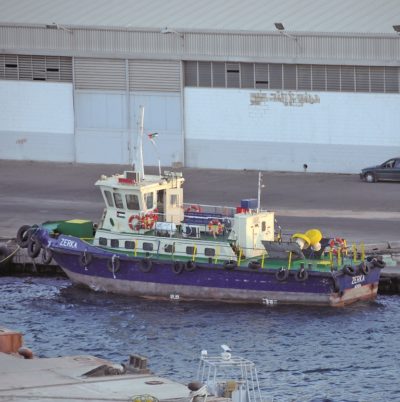
SHIP OPERATIONS
JNSL owned and chartered ships carry well over ten million tonnes of cargo annually in wet and dry bulkers for bulk and bagged cargoes, and tankers and specialised ships. JNSL also operates important liner operations to the Mediterranean, Persian Gulf and Indian Ocean carrying a wide range of cargo e.g. containers, pipes, drums, steel billets and project cargo.
CHARTERING
JNSL team of shipbrokers have extensive experience in the chartering of ships for international exporters and importers, and have chartered many feeder container ships over the years e.g. there have been at least three chartered feeder container ships with the name of Aqaba Crown. The JNSL chartering team have extensive IT systems to aid them in their work to use the correct chartered ship for the correct customer requirement.
SHIP AGENCY
JNSL is the professional ship agency for all ships arriving at the Port of Aqaba, and has offices in the neighbouring countries of Egypt, Israel, Iraq, Saudi Arabia and the United Arab Emirates (UAE).
FREIGHT FORWARDING and PROJECT CARGO
The JNSL freight forwarding department began its work in 1985 with global freight forwarding solutions to all customers in Jordan, Egypt, Israel, Iraq and down the Red Sea to the port of Jeddah in Saudi Arabia. Project cargo emanates from the industrial nature of the Southern Industrial Port of Aqaba, with heavy lift vessels with twin heavy lift cranes of up one thousand tonnes lifting capacity frequently needed.
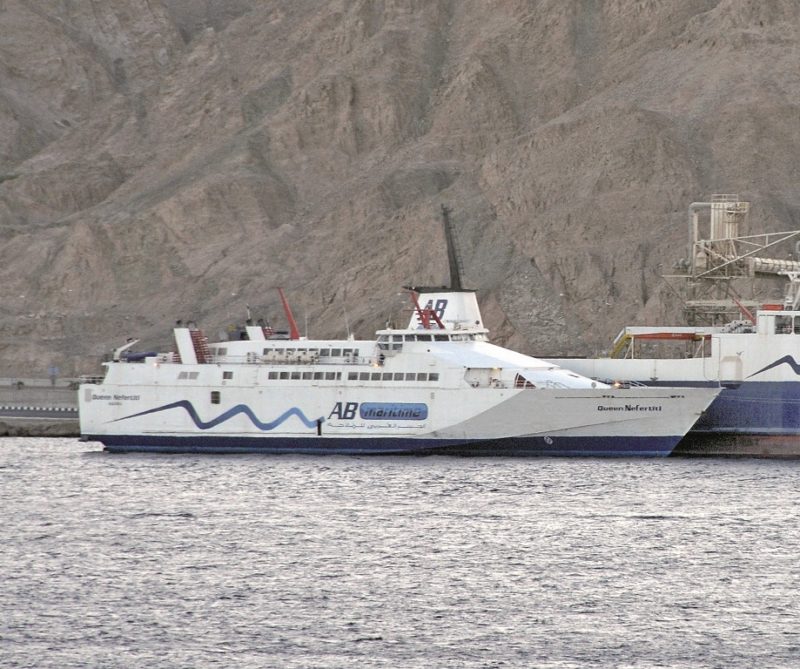
FERRIES FROM JORDAN TO EGYPT
Ferry links opened in April 1985 between Aqaba and Egypt and quickly grew to a total of 720,000 passengers and 43,000 freight trucks within a few years, and topped the magical one million passenger mark in 1992. The ferry company Arab Bridge Maritime was founded in November 1995 under a Maritime Co-operation Convention by the Governments of Jordan, Egypt and Iran to connect commercial ferry routes between their countries, with the paid-up share capital of $6 million equally shared between the three Governments. The company name is an appropriate name as ferries are in fact ‘Sea Bridges’. The Head Office is in Aqaba with branch offices in Amman, Cairo, Teheran and elsewhere in the Arab world. Arab Bridge Maritime owns 50% of the Arab Ship Management Company of Jordan and 30% of the Jordan Academy for Maritime Studies. The company operates two routes across the head of the Gulf of Aqaba, with a daily fast high speed craft passenger service taking one hour from Aqaba to Taba near the Israeli border at Eilat, and a daily slow passenger ferry taking 2.5 hours from Aqaba to Nuweiba in Egypt, as well as a twice daily freight only ro-ro heavily loaded with trucks and trailers.
Chartered ferries were used at first by the company, but now it owns seven ferries with three high speed craft in Queen Nefertiti of 3,971 grt and built in 1997 with seats for 580 passengers and room for 170 cars on the car deck, and The Princess of 2,552 grt and built in 2003 with seats for 654 passengers and room for 58 cars on the car deck, and the newest fast craft Babel purpose built for the company in Australia with seats for 217 passengers. Two of the fast craft trio operate from the Port of Aqaba to Taba in Egypt near Eilat in Israel. There are four traditional ferries and freight ro-ros in the fleet with white funnels with an ‘AB’ logo and a black top named:-
Sinaa of 9,667 grt and built in 1995 with seats for 350 passengers and room for 380 cars on the car deck, and is the former Volcan de Tejeda of Armas Ferries in the Canary Islands, her present name is the local name of the Sinai peninsula.
Bridge of 7,363 grt a ro-ro freight vessel built in 1995 and purchased in 2008 with capacity for 60 trucks on two decks, with an internal ramp fitted in February 2016 to replace an internal elevator to enable her to make two freight trips per day on the Aqaba to Nuweiba route. She is the former Egizia of Adriatica Line of Italy, her name meant ‘Egyptian’.
Aylah of 5,119 grt and built in 2009 with seats for 960 passengers and room for 90 cars on the car deck, and is the former Thassos VIII ferry operating in Greek waters.
Amman of 8,851 grt and built in 1995 with seats for 811 passengers and room for 440 cars on the car deck, and is the former Manuel Azana of Balearia Line operating in the Western Mediterranean between Spanish ports and the Balearic Islands, and Ceuta and Melilla in North Africa.
The passenger ferries all have white hulls with the company logo emblazoned in big letters on each side, and are equipped with bow and stern ramps, with the comfortable lounge shop and café supplied with pure drinking water from a desalination plant built at Nuweiba for the ferries and the local population.
There is also an Arab Bridge Maritime passenger service from the popular beach resort of Sharm El Sheikh on the southern Egyptian tip of the Sinai Peninsula to Hurghada on the Egyptian Red Sea coast using the Queen Nefertiti fast ferry on twice weekly trips taking 2.5 hours each way. A total of around 1.5 million ferry passengers plus around 150,000 cruise passengers use the Port of Aqaba per annum.
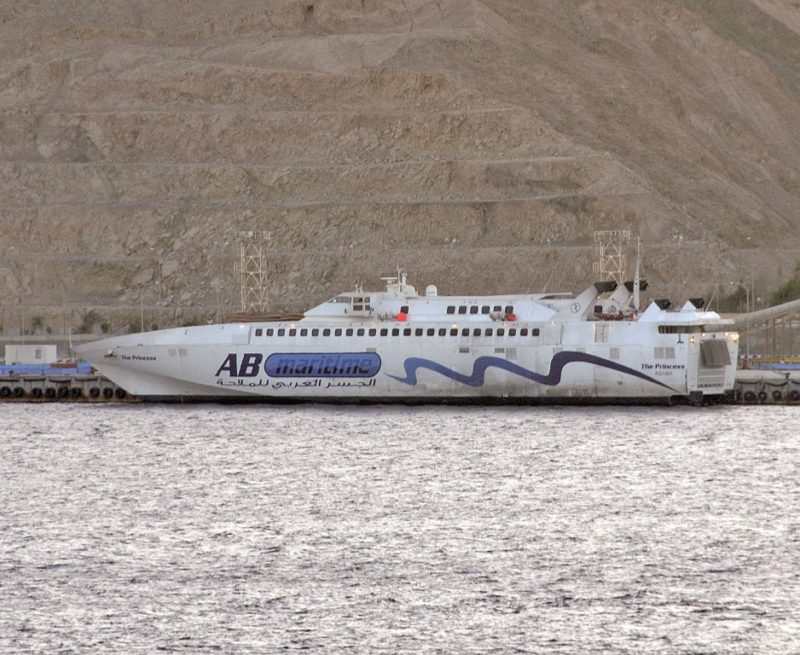
POSTSCRIPT
The Hashimite Kingdom of Jordan officially came into existence under this name in 1947, and was joined by the districts of Samaria and parts of Judania that had previously been part of Arab Palestine. As well as the big port cargo and industrial berths described above, the Aqaba Marine Park well to the south of the Southern Industrial Port offers a chance for holiday makers and visitors to enjoy a clean beach, plus the Yamanieh coral reef just off the coast, where many species of fish, hard coral and soft coral can be found. This marine park was created in 1997 to protect this endangered ecosystem of seven miles in length on the south eastern side of the Gulf of Aqaba. The Visitor Centre gives full and clear information on the exhibits of coral and on a huge collection of rare sea shells from all over the world.

The Port of Aqaba is very much a busy, bustling port with up to three thousand vessels calling annually, and with a year on year increase in the total of imports and exports handled, with much transhipment cargo handled for other Arab States. This has included a three million tonne increase in imports and exports throughput in the last ten years. The Aqaba Special Economic Zone (ASEZ) has blossomed into a great busy trading zone near the port since it was created as a regional trade hub by His Majesty King Abdullah II of Jordan in 2001.
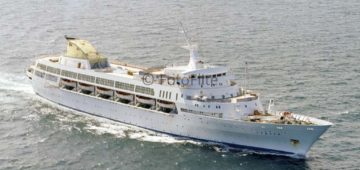



Comments
Sorry, comments are closed for this item